The Conservation Commission met for nearly four hours Tuesday night and approved modifications to projects previously before the commission, including a lot on the Connelly Farms project as well as and the Leonard Street development.
Scott Goddard, representing Ravenwood LLC and developer Ron Nation, updated the commission on the Connelly Farms subdivision project off Hayden Rowe Street near the intersection with College Street, taking up the bulk of the meeting. Seven of the nine lots were heard for notices of intent (NOI), which provoked a lengthy discussion. All the NOIs were continued until the next meeting.
“The two main issues in terms of wetland impact are the wetland application and the stormwater management,” he explained in an overview.
The wetland replication was located to the field in the front that was readily accessible for construction access, he said. He also noted that the stormwater management was now appropriate if the project were considered as a conventional subdivision instead of a cluster subdivision. However, it was proposed as a cluster so that there would not be as much road build and impervious surface, as well as centering it away from the riverfront area.
There is the issue of the project being “economically equivalent” — meaning that the amount of expenditure on the project had to allow for a profit. It also needs to protect the riverfront area by the stormwater management system, which was peer reviewed and approved.
“It is our belief … that a lot of thought was put into this plan to preserve open space,” Goddard continued, noting that the developer and his surveyor agreed. He said that an alternative design was proposed to move three houses on Lots 6, 7 and 8 farther from the riverfront area, and that in the regulations a project can go up to 10 percent into the riverfront area.
Conservation Administrator Kim Ciaramicoli questioned the fact that it was not presented to the commission beforehand and that approval was assumed.
Chair Jeff Barnes noted that the construction sequence needed to be provided as requested previously. Also, he said he was glad that three houses were pulled away from the riverfront area but that the detention basin and the yards could be pulled further away from the wetlands as well. The detention basin is at the lowest point of the project.
“We have chosen this location to capture all the water that we can,” said Joe Marquedant from J.D. Marquedant & Associates land surveyors, representing the applicant, “so that in other spots we can reduce the clearing associated with the surrounding infrastructure.”
He added that they are “seeking a balance” to provide enough yard space for the houses.
Barnes said that the hearing on the stormwater should be continued until the next meeting on Nov. 2 to address the concern about the three house yards at the riverfront.
On the single lot hearings, the overall concerns raised were swale crossing several yards and the length of the driveways.
On the first lot, committee Member Ted Barker-Hook expressed concern about the front yard being within the 100-foot buffer, which was echoed by Members Jim Ciriello and Janine LeBlanc. They feared it would set a precedent that yards could encroach upon the buffer zone.
Goddard said the bylaw allows applicants to work within the buffer zone if conservation efforts have been made.
“I just sense those lots that we’ve looked at that we can cut back on how much lawn is there,” Barker-Hook responded, noting that he is not opposed to some yardage in the buffer zone.
Barnes noted that the commission has been more conservative on stormwater issues because, with all of Hopkinton’s recent development, stormwater management has become an issue.
On Lot 3, Lucas environmental consultant Matt Varrell said he was concerned about the “extremely large amount of pavement” in front of the driveway. Nation said that amount could be cut back.
When swale management was discussed, Marquedant said that it would be managed by the homeowners’ association. The easement runs through several properties, about which member Kerry Reed expressed concern because there could be no fences between properties. Nation confirmed that fences would not be allowed.
Varrell also questioned the swales, suggesting that the water could be redirected back toward the wetlands rather than toward the detention basin. Marquedant explained that the concern raised at the Planning Board would the impact the wetland, which is why the swales are used. Members mentioned concerns about the full usability of the yards with the swales crossing through them.
Goddard said that the applicant should be praised for the design that takes conservation efforts in mind. Barnes agreed but said that “a little more work needs to be done.”
Varrell suggested a “middle ground” where some of the trees on the lots of a certain size could be preserved while making the lawns usable.
Leonard Street project modified
Lou Petrozzi of Wall Street Development Corporation appeared before the board on the three-lot Leonard Street project, which the commission approved after discussion, with Ed Harrow voting against. It previously had been fined for stormwater management issues.
Petrozzi noted that over the past week, his team was able to “substantially complete the detention basin and the spreader” as well as loaming and seeding. The remainder of the infrastructure work on the northerly part of the property is expected to be completed later this week, with work to the remaining portion of the swale to the detention basin to be completed next week.
“The wetland right now is back to where it would normally be,” Petrozzi said. Utility work around Pleasant Street will be done next week, with sewer work shortly thereafter.
Barnes reminded Petrozzi that the deadline for infrastructure work is Nov. 1 because of the enforcement order related to the stormwater issue and the pumping of water onto other properties.
Petrozzi said that the water is being pumped onto his property, but the commission did not agree. He also said the enforcement order was based on construction of the roadway, but the overarching concern of the commission was the flooding issue.
“There’s been a lot of work done in the past week, and we appreciate that,” Barnes said.
Petrozzi said that the modified plan with a swale over the northern perimeter was an improvement over the original design. He said the water will go around the houses and out to the west to the detention basin, which is “a substantial improvement.”
He also plans for a homeowners’ association to maintain the swale.
“We have a good relationship with our neighbors,” he said, noting that if there were a problem, the land will be regraded.
Abutter Thomas Terry, who called in by phone, begged to differ. He owns the property to the west, and he said the water has been pumped onto his property.
“The water is all coming over to my land, and it’s really becoming a major problem,” he said. Before, the water used to flow from the opposite corner, he said, but now it flows toward his property.
“I object to the fact that someone was telling everyone that the abutters are in favor of everything that’s going on and everyone has high praises,” he said. “I’m very upset at what has happened here.”
He also said he did not believe that the homeowners’ association managing the swale would be a “homeowners’ agreement nightmare” that should not be allowed on such a small project.
Barnes said that the pipe into the detention basin will be capped, which should keep the water in the basin.
Petrozzi said that Terry had come out to the site while a trench was being dug to put in a sewer pipe, which may have caused confusion. It was not inspected by the town because it is private, he said.
Said Barnes: “The water flows down to his property. We’ll leave it at that.”
Chamberlain-Whalen lot approved after modification
Lot 12 of the Chamberlain-Whalen project was unanimously approved. Goddard, the environmental consultant on the project, reported that the Board of Appeals approved a reduction of the front-yard setback from 60 feet to 30 feet. This allowed the proposed house to be completely out of the 100-foot buffer zone.
He asked for a request for reconsideration on the new plan. In a previous meeting, John Kucich of Bohler Engineering said he believed that Lot 12 was the most challenging of the development and that it could not be pulled back from the buffer zone.
I’d just like to express my appreciation to the applicant for looking for a different solution,” said Barker-Hook. “I think we often hear, ‘This is the only way we can make this project work,’ and often when asked to reconsider, they do find other ways.”


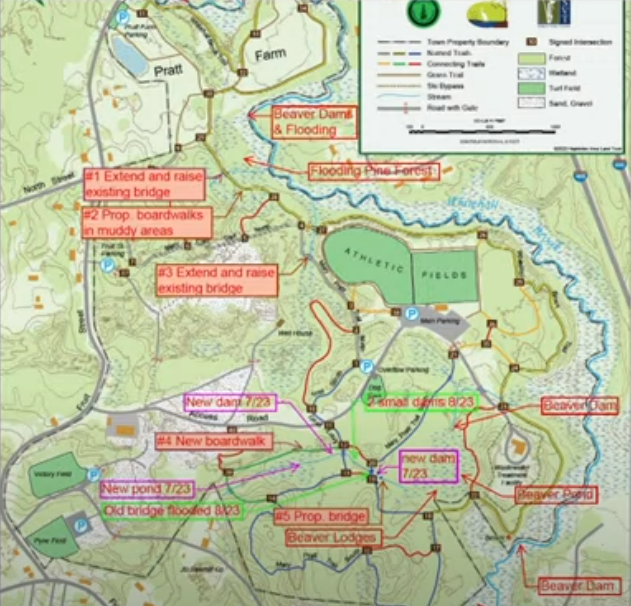
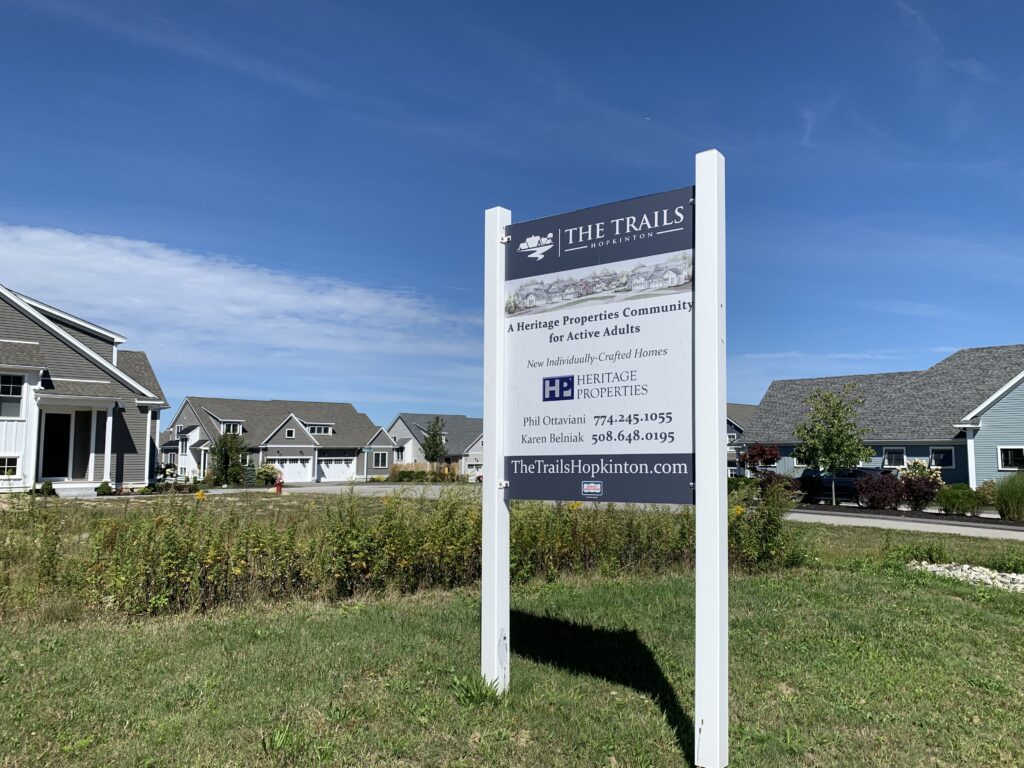
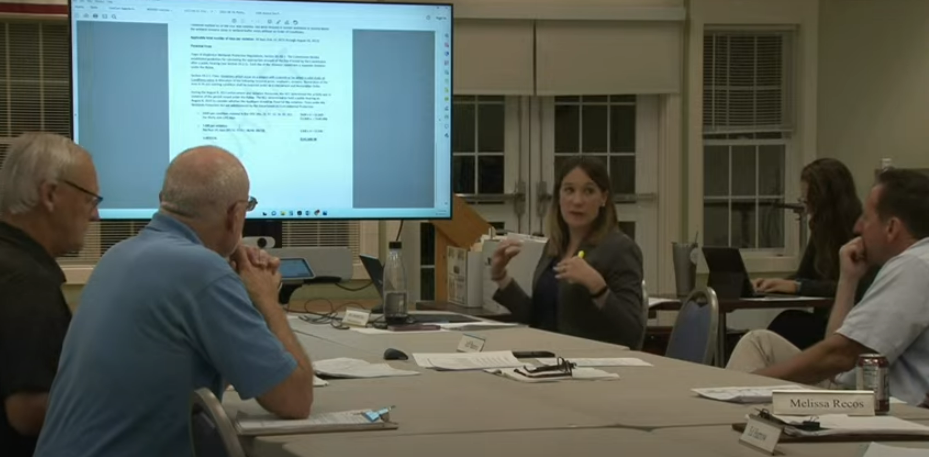
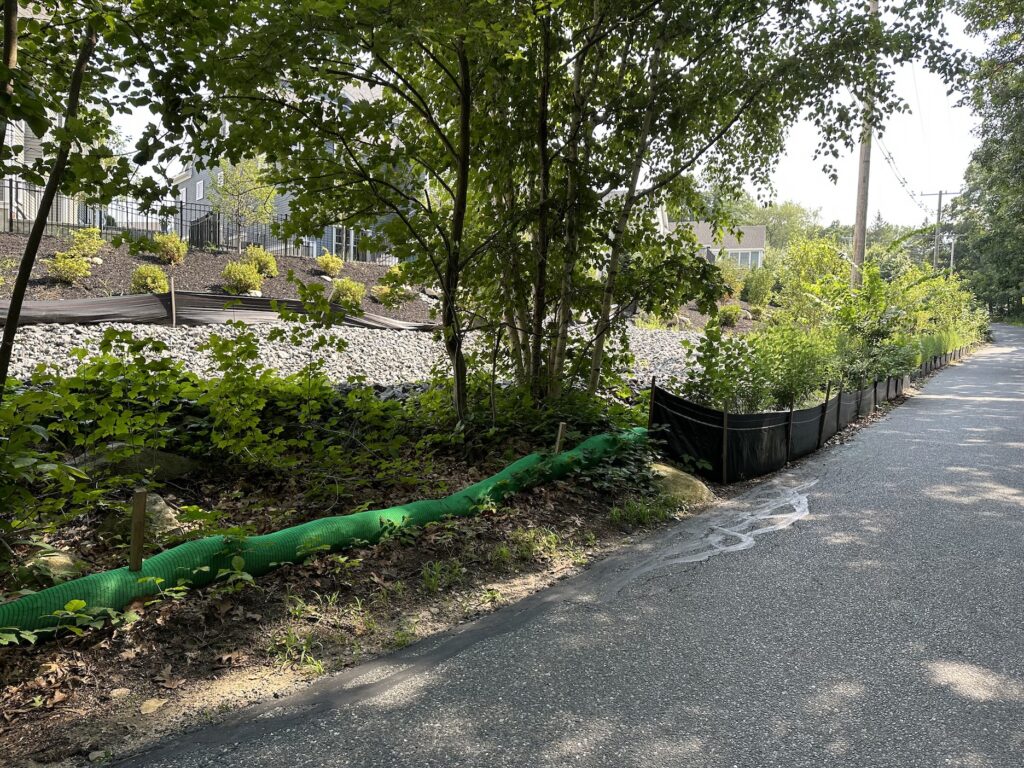
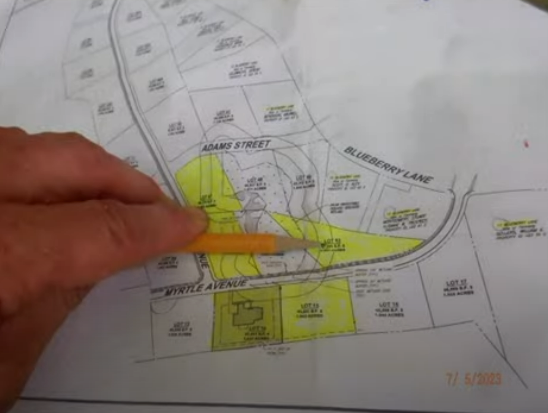
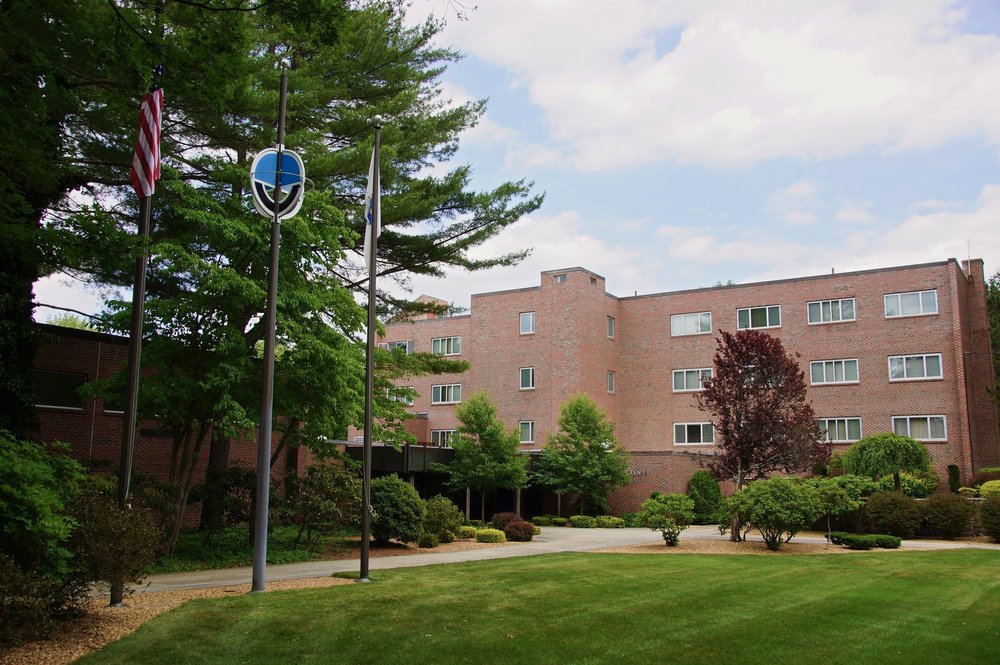












0 Comments